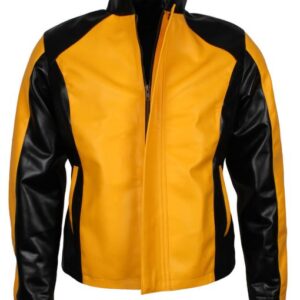In the bustling world of fast food, few items are as universally expected as cold drinks. Whether you’re grabbing a quick burger or munching on fried chicken, an icy beverage often accompanies the meal. But why have these beverages become such an inseparable part of fast food culture? The answer lies in a mix of psychological appeal, marketing strategies, economic benefits, and consumer expectations—making them a true staple of cold drinks.

The Psychological Appeal of Cold Drinks
Cold drinks’ refreshing and filling qualities are a major factor in their dominance in fast food culture. In order to balance the flavors and clear the palate, people naturally crave something cold after consuming meals that are salty, spicy, or greasy—all of which are typical of fast food. The whole eating experience is improved by the cooling effect and sweet taste of cold beverages, particularly ones that are carbonated.
Sensory Satisfaction
The tingling sensation that carbonation gives the beverage makes it seem more exciting and invigorating. The cold temperature and fizzy texture create a pleasurable sensation in the brain. Studies in food psychology have discovered that cold, bubbly drinks appeal more in a fast food setting because they activate sensory pathways related to comfort and reward.
Economic and Operational Advantages
From a business standpoint, cold drinks are one of the most profitable items on the fast food menu. They are inexpensive to produce but are often sold at a significant markup. A cup of soda, for instance, may cost a restaurant only a few cents to make, but it can be sold for $1.00 or more.
Easy to Serve
Cold drinks are also easy to prepare and serve. Self-service soda fountains allow customers to fill their own cups, reducing the workload for staff. The drinks are ready instantly, unlike food that needs to be cooked or assembled, which makes them ideal for quick service.
Marketing and Upselling Tactics
Fast food chains have cleverly integrated cold drinks into their pricing and promotions. Combo meals, for example, often bundle a sandwich, fries, and a cold drink at a seemingly discounted rate. This not only increases the average transaction value but also reinforces the idea that a cold drink is a standard part of the meal.
Brand Loyalty Through Beverages

Why do fast food chains have exclusive partnerships with beverage companies like Coca-Cola or Pepsi? These partnerships lead to co-branded advertising campaigns, limited-edition drinks, and seasonal specials—all designed to create excitement and loyalty among consumers.
“The soda is not just a drink—it’s a symbol of the entire fast food experience.”
– Dr. Marion Nestle, Food Politics Expert
Cultural Conditioning and Habits
Over the years, cold drinks have become deeply ingrained in food culture, particularly in the U.S. and increasingly around the world. From childhood, people are conditioned to associate burgers, pizza, and fried foods with sodas. This cultural habit is difficult to break and heavily influences consumer behavior.
Social Norms and Expectations
When people order fast food, they often do so in groups. The presence of cold drinks as a standard part of the meal means that choosing not to have one can feel unusual or even antisocial. As a result, customers tend to follow social norms and order a drink—even if they weren’t initially thirsty.
Health Concerns and Changing Trends
Cold beverages, particularly sugary sodas, have drawn criticism despite their widespread use for contributing to the international obesity and diabetes epidemic. Over 50 grams of sugar can be found in a typical large soda, which is significantly more than the daily recommended allowance. Some fast food restaurants have begun to provide healthier options, including sparkling water, bottled water, and reduced-sugar options, as health consciousness has grown.
Shifting Preferences

Compared to earlier generations, modern consumers are more concerned about their health, especially millennials and Gen Z. Fast food establishments must adapt as part of that shift. Even so, cold beverages are still a mainstay, albeit with greater variety these days. Natural fruit sodas, kombucha, and iced green tea are starting to replace conventional colas on store shelves.
Conclusion: A Strategic Staple
Cold beverages are an essential part of the fast food experience, not just an extra. Cold drinks serve a variety of purposes in the field of fast food, from boosting revenue and improving flavor to bolstering brand identity and meeting cultural norms. The structure and purpose of cold drinks remain constant despite changes in health trends, demonstrating their perseverance as a mainstay in one of the most potent food cultures on the planet.
The next time you order that combo meal, keep in mind that the cold beverage is cooling not just you but also an entire industry.
READ MORE……. health and fitness





